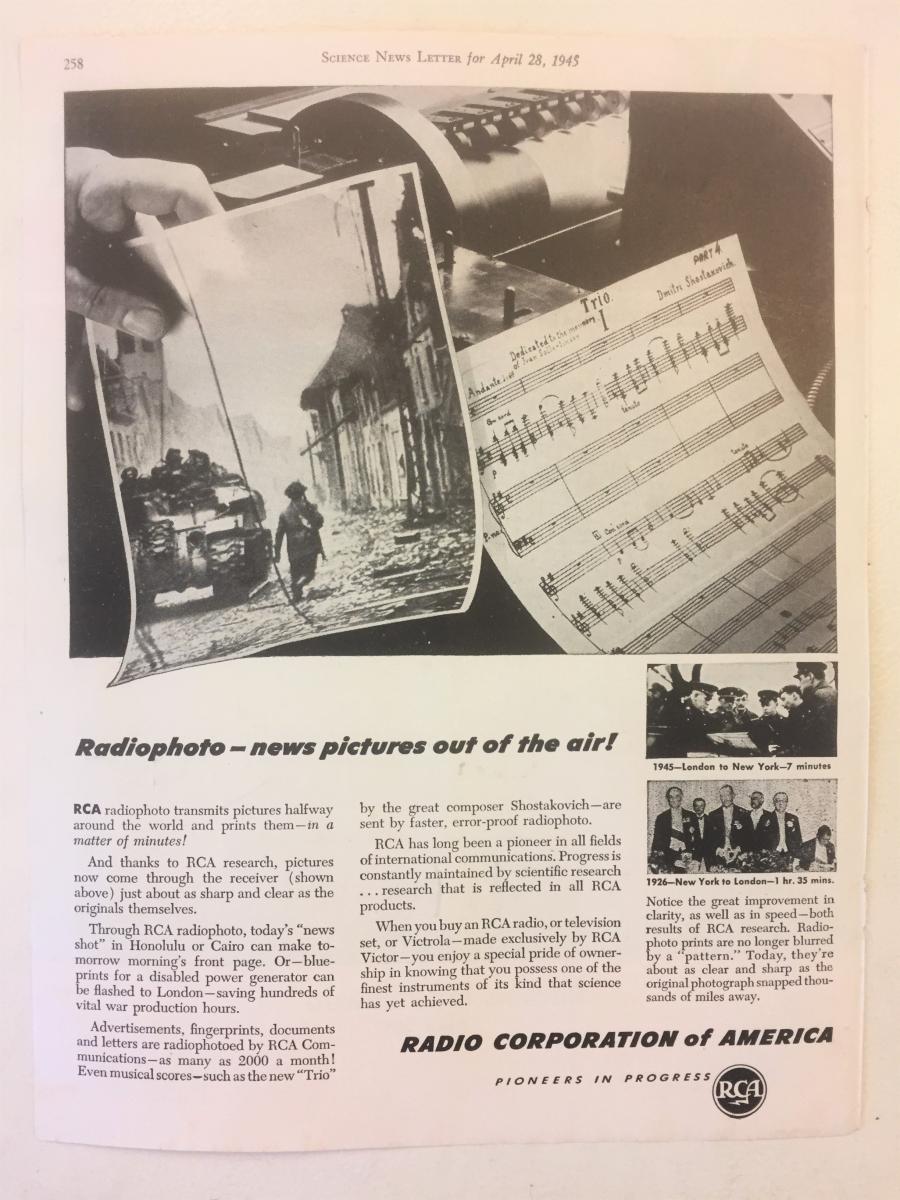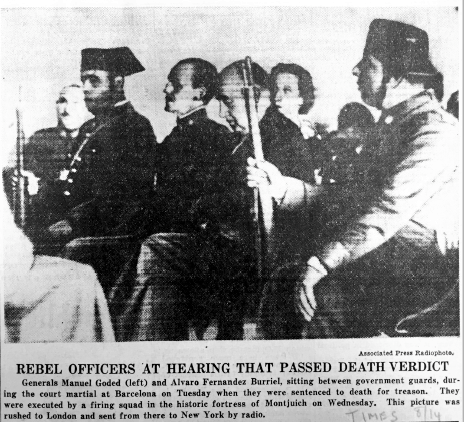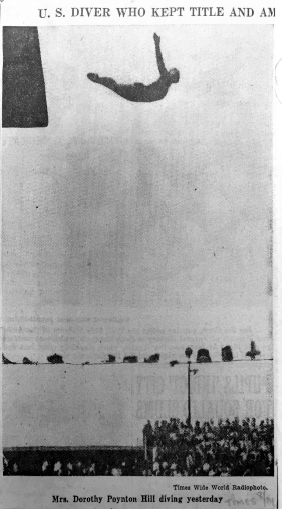The Radio Corporation of America (RCA) was founded in 1919 when Owen D. Young, the president of General Electric, bought the Marconi Wireless Telegraph Company of America and used it to form a radio patent monopoly. Though the company is best known today for making radio listening and broadcasting widespread, it also pioneered a lesser known business: transmitting photographs around the world by radio.

Last June I spent a week looking at some fascinating documents in Hagley's archive relating to David Sarnoff, who was the head of RCA for many years, and was a visionary when it came to picture telecommunications.
On March 5, 1925, the Radio Corporation of America (RCA) transmitted the first spot news picture to cross the Atlantic by radio. In twenty-five minutes, an image depicting the German president, Friedrich Ebert, lying in state sped from Imperial Cable and Wireless’ offices in London to RCA’s installation in New York. The picture made a splash in the daily press while the printed photo lagged into New York harbor five days later by mail steamship. The ability to transmit pictures by radio and telephone wire allowed new internationally organized news photography services to acquire and distribute topical news photographs around the world. RCA had inaugurated a new age in which world events could be seen within days or even hours rather than weeks.
Shortly before he was appointed president of RCA in 1929, Sarnoff wrote an article for the New York Times Sunday edition called “Forging an Electric Eye to Scan the World.” “Consider the eye,” he wrote, which, “still looks out naked upon the world, sometimes aided to a limited extent by pieces of curved polished glass. A sensitive photographic apparatus, the eye demands that every scene be contracted to its limited field of vision… Within three to five years… I believe we shall be well launched into the dawning age of sight transmission by radio.”[1]
He argued that the perfection of still picture transmission was a step on the road to an eventual television service that would span the globe. Soon, RCA’s installation in New York was connected to a growing network of picture transmission stations around the world, from Berlin to Buenos Aires, bringing world news in pictures to Americans. For the first time, audiences could see direct visual evidence of world history unfolding before their very eyes, in the form of spectacles such as the Olympics and the Spanish Civil War.


The Hagley Archive’s invaluable collection of documents relating to David Sarnoff and RCA are a vital to the story of how we now see our world.
[1] Sarnoff, “Forging an Electric Eye to Scan the World: Sarnoff Pictures the Great Concentration of Effort Now Being Made to Achieve Television and Discusses its Future,” The New York Times, Sunday, November 18, 1928, Hagley Archive, Acc. 2464, Box MA 40, Vol. 5, 1927-1928.
Jonathan Dentler is a PhD Candidate at the University of Southern California. His dissertation project, titled “Wired Images: Visual Telecommunications, News Agencies, and the Invention of the World Picture, 1917-1955".
